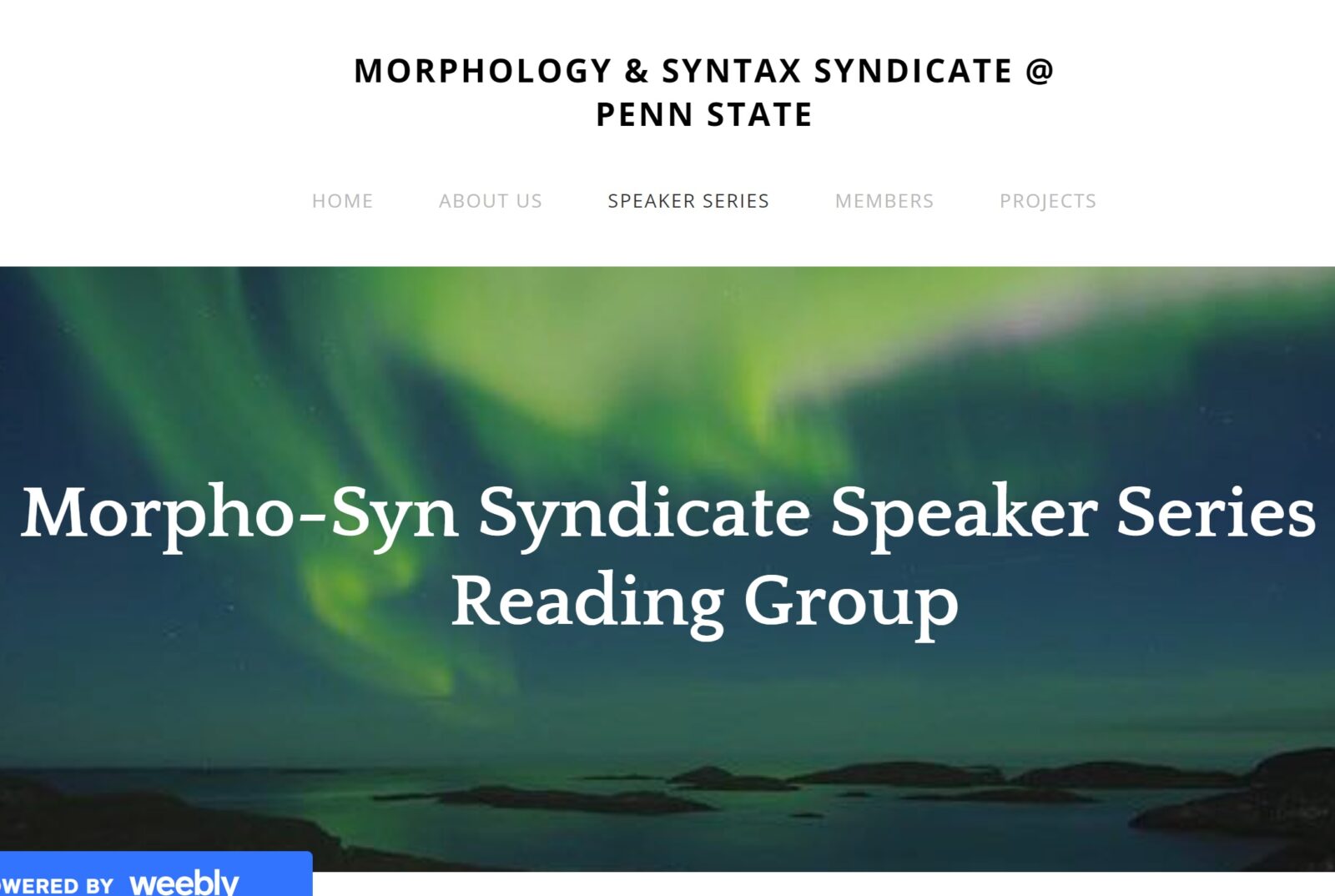Events
Morphology Circle @PSU: Andrew McKenzie
On Monday, October 30th at 3-4pm (Utrecht time) Andrew McKenzie (University of Kansas) will be giving a talk entitled Polysynthesis and the division of labor in grammar.
Here’s the Zoom Link
Password: Poly23!
Abstract
Polysynthesis and the division of labor in grammar
In this talk I argue that some aspects of polysynthesis result from the use of heads in the extended verbal projection to saturate arguments and link them to the main event. Stems combine directly with these rather than with distinct heads (like determiners) that project non-verbal phrases.
Problem. Recent inroads in understanding the way polysynthetic verbs are built have led to a disconnect. Syntacticians have generally assumed that polysynthesis builds words without significantly affecting the semantics. Meanwhile, linguists focused on functions or truth-conditions repeatedly point out that polysynthetic phenomena do affect meaning. However, these linguists do not often concern themselves with how the verbs get built. Under the by-now standard conception that the syntax and semantics correspond (whether directly or via LF), these two approaches seem incompatible.
Approach. A full solution to this problem is too large for one talk. Yet I will propose that focusing on the semantics of polysynthesis will get us closer to an answer, by revealing elements of structure that need to be present and also which seem to be available in non-polysynthetic cases/languages. Polysynthetic strings are known to have internal structure and composition. Semantic studies of noun incorporation emphasize its weak compositionality—the meaning of the sum is more than the meanings of the parts. These studies show that verbal elements can provide quantification and thematic links for incorporated nouns.
Basic idea. Building from there, I hypothesize about what leads to polysynthesis: The verb handles the ‘functional’ components of the semantics that meaningfully link lexical stems to the sentence. Focusing on Kiowa (kio | Kiowa-Tanoan), I apply this division of labor to more than just noun incorporation— It helps us understand verb incorporation and pronominal arguments, along with different kinds of stems that are put into verbs: adverbial, classificatory, thematic, modal, and illocutionary. In cases/languages without polysynthesis, determiners convert nominal properties into entities or quantifiers. Complementizers and infinitivals convert propositions and verbal properties into content for perception or attitude verbs. Adpositions, case-assigners, and low verbal heads convert these into event modifiers (or arguments thereof). In polysynthetic cases/languages, these conversions are effected directly by heads in the extended verbal projection. Only when these verbal heads do this work can the stems combine directly in the syntax. Otherwise a phrase is needed, headed by something that does that work.
Looking more broadly. I will lay out how this idea works with Kiowa and some other cases of polysynthesis in the Americas. Assuming a roughly universal phrase structure, we can predict that non-polysynthetic languages have many of the same pieces; they simply show up to different degrees. This seems to be case: Complex verbs abound— light verbs, semi-auxiliaries, restructuring, serial verbs, and auxiliaries. Main verbs decompose to reflect event structure and argument structure. Linear templatic rules govern clitic placement. Indefinites have often been argued to lack operator determiners, instead being bound by something higher in the clause. Seemingly free adverbials and adjectives compose in strict templatic order, some of which is derived semantically. This constellation of coincidences becomes a coherent picture if the components of polysynthesis are present.
Put another way: Polysynthesis has fascinated linguists ever since the days of missionaries and gentleman-scholars, because it was so different. However, it is likely that every language actually has what it takes to become polysynthetic. Some languages’ verbs simply outsource more of the work. This reinforces the generative finding that the fundamental building blocks of language differ little if at all across languages, and does so without hinting that polysynthesis deviates from an analytic norm.

